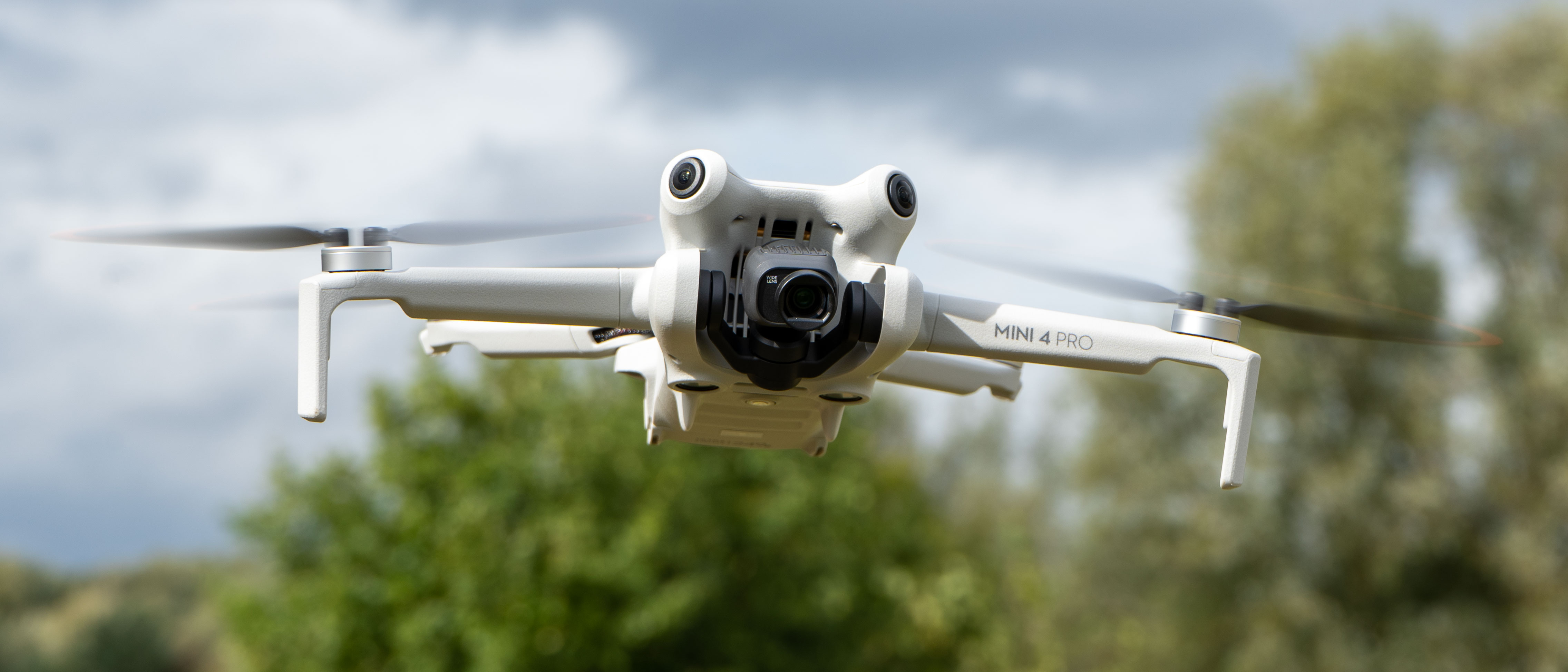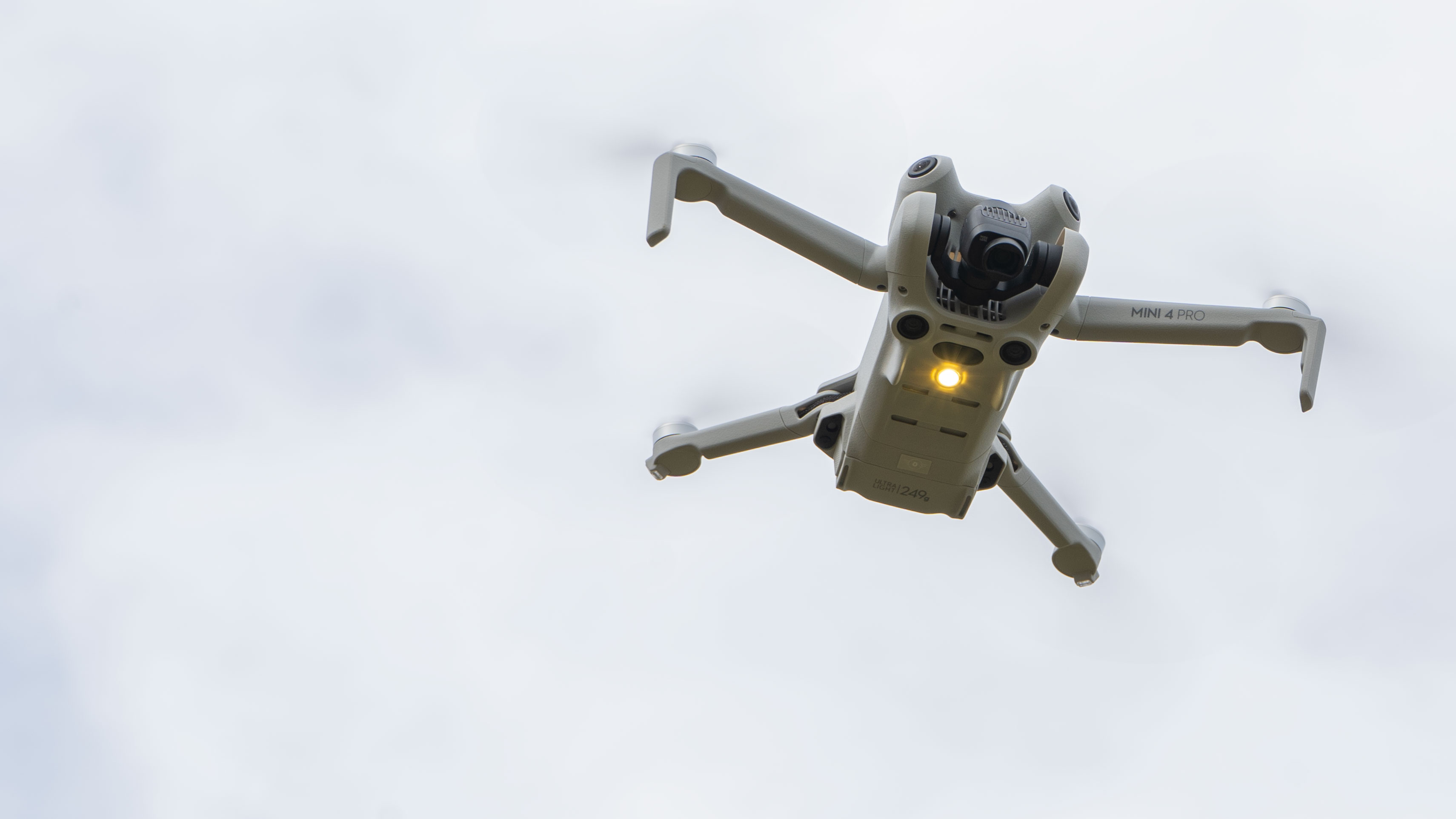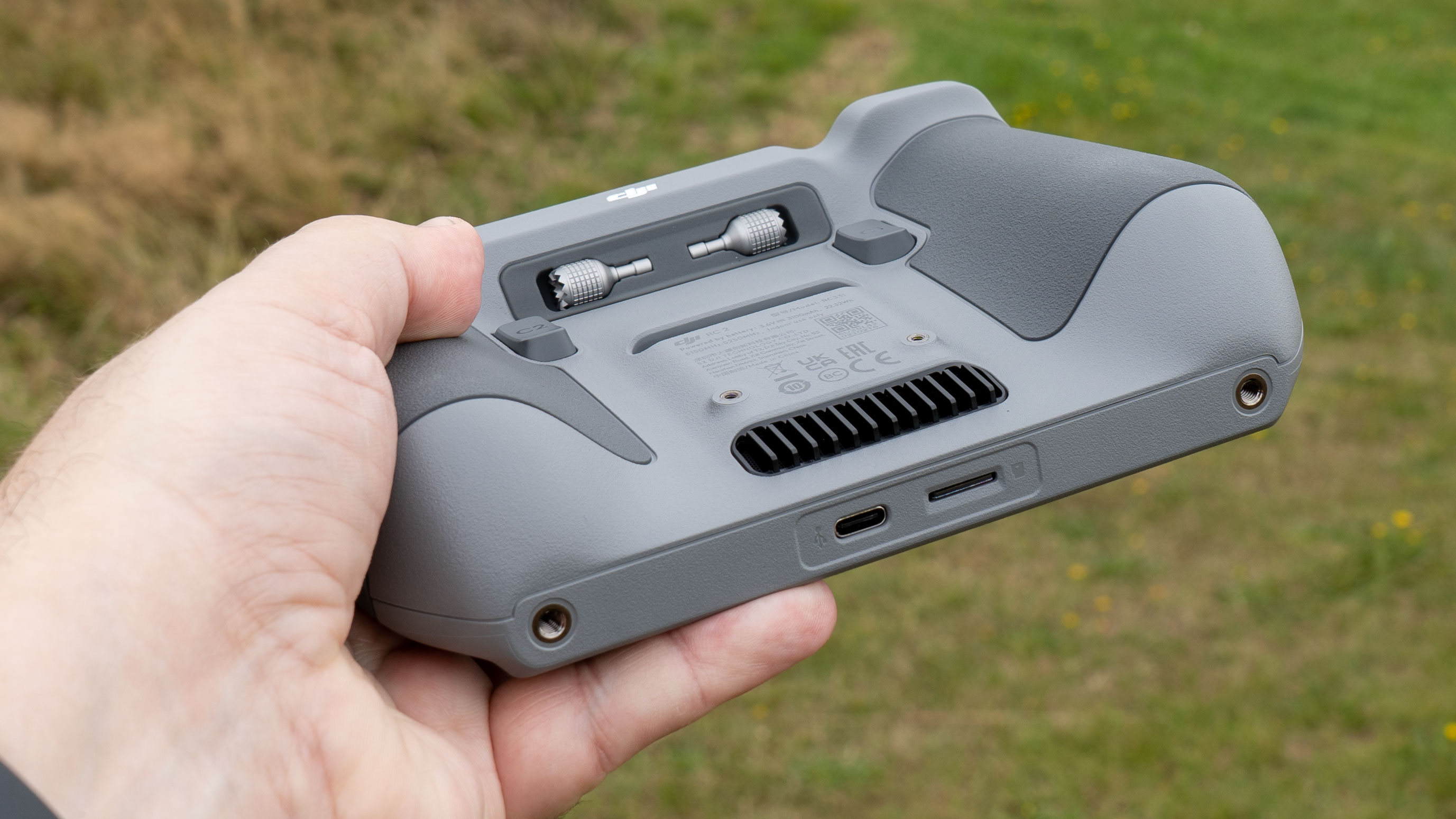Digital Camera World Verdict
I gave the Mini 3 Pro five stars and, a year on, this is better. Perhaps not so much better that you'd want to upgrade from that drone, but still an amazing achievement that seriously questions whether it's worth going bigger and heavier. If your pockets are deep enough, it meets all its promises and more.
Pros
- +
RAW Stills and 10-Bit video
- +
Mechanical camera rotation
- +
Still under 250g limit
- +
All-round collision
- +
Low-light sensors and light
Cons
- -
Camera spec hasn't moved on
- -
Price is prohibitive
- -
Smart tracking can still be fooled!
Why you can trust Digital Camera World
The Mini 4 Pro is a refinement rather than an out-and-out replacement of the already popular Mini 3 Pro model. In that generation, DJI made plain that the world’s most successful drone company thought it possible to offer three distinct tiers in the ultralight (below 250g) category.
The generational number doesn’t change at the same time but it isn't a surprise that it's the Pro that advances first. So how can what is (or at least should be) DJI's best option under 250g be kept ahead of the pack? The drone powerhouse has decided that it's the software and AI, rather than the camera sensor, which is worthy of attention. That's certainly something which chimes with not just the wider drone industry, but the world in general.
The AI, by the way, is a broad generalization for the tech which can both avoid collisions and how it can help track a subject for smooth shots. Collision sensors are one thing – the way a drone uses them is quite another.
We'll be looking closely at whether the software is gimmicky or useful, and whether the drone truly lives up to the 'Pro' tag. The other crucial question for many readers, no doubt, is whether the Mini 4 Pro is of interest to photographers and videographers already equipped with its predecessor – for the record, that includes me; I spent my own hard-earned on a Mini 3 Pro.
With all that in my mind, and hoping the rain would hold off, I headed out with the Mini 4 Pro and these were my experiences with it.
DJI Mini 4 Pro: Specifications
Camera: 24mm EFL ƒ/1.7
Image sensor: 1/1.3-inch 48 MP
Still image size: 8064 x 6048
ISO: 100-6400 (or 100-1600 in high dynamic range modes), 100-12800 night mode
Video: 4K @ 60fps Normal mode, 100fps Slow-Mo mode
Max frame-rate: 200fps at 1080P / 100fps at 4K
Color modes: 8-bit or 10-bit 4:2:0 (HLG / D-Log M)
Radio / Range: DJI O4 / 20km (12.4 miles)
Max speed: 16m/s (35.8mph)
Flight time: 34 min perfect / 30 min hover
Weight: 249g (on my scales, with battery + memory card)
Dimensions: 148 x 94 x 64mm (folded)
DJI RC 2 weight: 416g
DJI Mini 4 Pro: Key Features
DJI's strapline for the Mini 4 Pro's launch was "Mini to the max," to emphasize how the drone brought ever more flagship features into the ultralight category. The stand-out additions (as well as a camera broadly similar to one of the two on the recent DJI Air 3) are all-around obstacle sensors. These can be used not only for avoiding objects when headed sideways (unlike the Mini 3 Pro), but also to bolster subject-tracking AI in an upgrade called ActiveTrack 360˚.
The best camera deals, reviews, product advice, and unmissable photography news, direct to your inbox!
This system has also been boosted with a tool called the 'Trace wheel' allowing more complicated shots to be achieved using the automated tracking. There are other UI improvements that have some elements of augmented reality to make finding the takeoff point easy, or to see the projected flight path in the air.
The camera has also gained Night Shots Video mode, improving the low-light performance, and an LED landing light on the base so you can land in the dark.
At the same time, the drone has been upgraded to DJI's new O4 video transmission system, which has a range of over twelve miles with a clear line of sight which means the updated RC 2 controller with fold-out antenna is an option.
DJI Mini 4 Pro: Build and handling
DJI loaned me the Fly More Kit with the RC 2 controller. My first time trying this controller was when I recently reviewed the Air 3. The kit includes the same high-quality and space-efficient shoulder bag with room for the 3-battery charger, remote, and quad, plus a lid full of spares, though it's a tight fit to jam the ND filters and wide-angle lens adapter in too).
The quadcopter has gained an additional protective strap which makes sense protecting the flappy propellers when pushing it in and out of the tight bag. Holding it, the rear vents are noticeably bigger than its predecessor but the more obvious change is the fish-eye vision sensors – the front ones are now more exposed on at the sides, like an insect, and the rear ones similarly so. (The Mini 3 Pro's backward-facing collision sensors were smaller and much less exposed but could only see backward – obstacles to the side were ignored).
While the top of the 'copter has grown a little, the battery seems interchangeable. On the base of the Mini 4 Pro, there is a central LED light, not unlike other larger DJI drones, and two vision positioning sensors – both new to this model – as well as the obstacle avoidance cameras. The light and vision positioning means the drone can land and hover near the ground in low light.
Brilliantly the front arms have gained legs, just like bigger DJI quads, making it easier to land on (well-cut) grass if needed. Despite this, it's still possible to open them in either order, making it less fiddly than many folding drones, and – although plastic and obviously light in the hand – the hinges feel reassuringly strong.
DJI RC 2 Controller: Build and handling
I can say that my experiences with DJI's alternative control choice, which has a grip for a phone that slides from the body, have been excellent, but for this review, I had the DJI RC 2. This controller looks outwardly like a slight regression from the DJI RC – the controller I bought with my personal Mini 3 Pro. It has a folding antenna which feels a bit retro – it's about 20 years since I pulled the antenna out of my mobile phone. Similarly, there is no rubber cover on the base and one fewer USB-C socket.
Otherwise, they are in essence the same. A high res screen that is bright enough (but could be brighter) backing an Android variant that hosts DJI's piloting app. This keeps your phone free
More importantly, the radio system (which not only sends controls but receives the live video) is actually more reliable. How much is the antenna and how much is the upgrade to DJI's newer O4 system it's impossible to know, but it is a marked improvement (and it was already hard enough to get its predecessor to glitch out when flying within a reasonable range).
That one USB-C socket also serves as a DisplayPort so can be used with glasses.
DJI Mini 4 Pro: Camera Performance
I'm trying to avoid reaching for my copy and past controls here, since the DJI Mini 3's camera is more or less the same as its predecessor, at least as far as the physical hardware is concerned. The processing grit now exists for nearly everything to be done in 4K 60fps if desired. This was not always the case – in the past many auto-tracking modes or the QuickShots would require a drop to a lower resolution or frame rate.
The video is gorgeous, no question. The bit rate fluctuates around 130 kbps in the 4K 60fps clips when checked in VLC, sometimes higher, so there is always enough data to ensure rich detail in the video. It's a good idea to think about your shots and to use manual mode too – the automatic exposure is susceptible to a quick shift when tilting the camera up or down. That's not the wrong response – far from it – but might not work in certain creative circumstances. It's good to have the choice.
I also had the opportunity to test the Wide Angle Lens adapter. This easily replaces the camera lens surround with a slight twist and offers an alternative perspective if the already generous 24mm EFL doesn't seem enough for you. There is the slight cost, admittedly, of a slight fish-eye effect, but since the lens detects the presence of the adapter and adds it to the metadata it is easy to find and correct for.



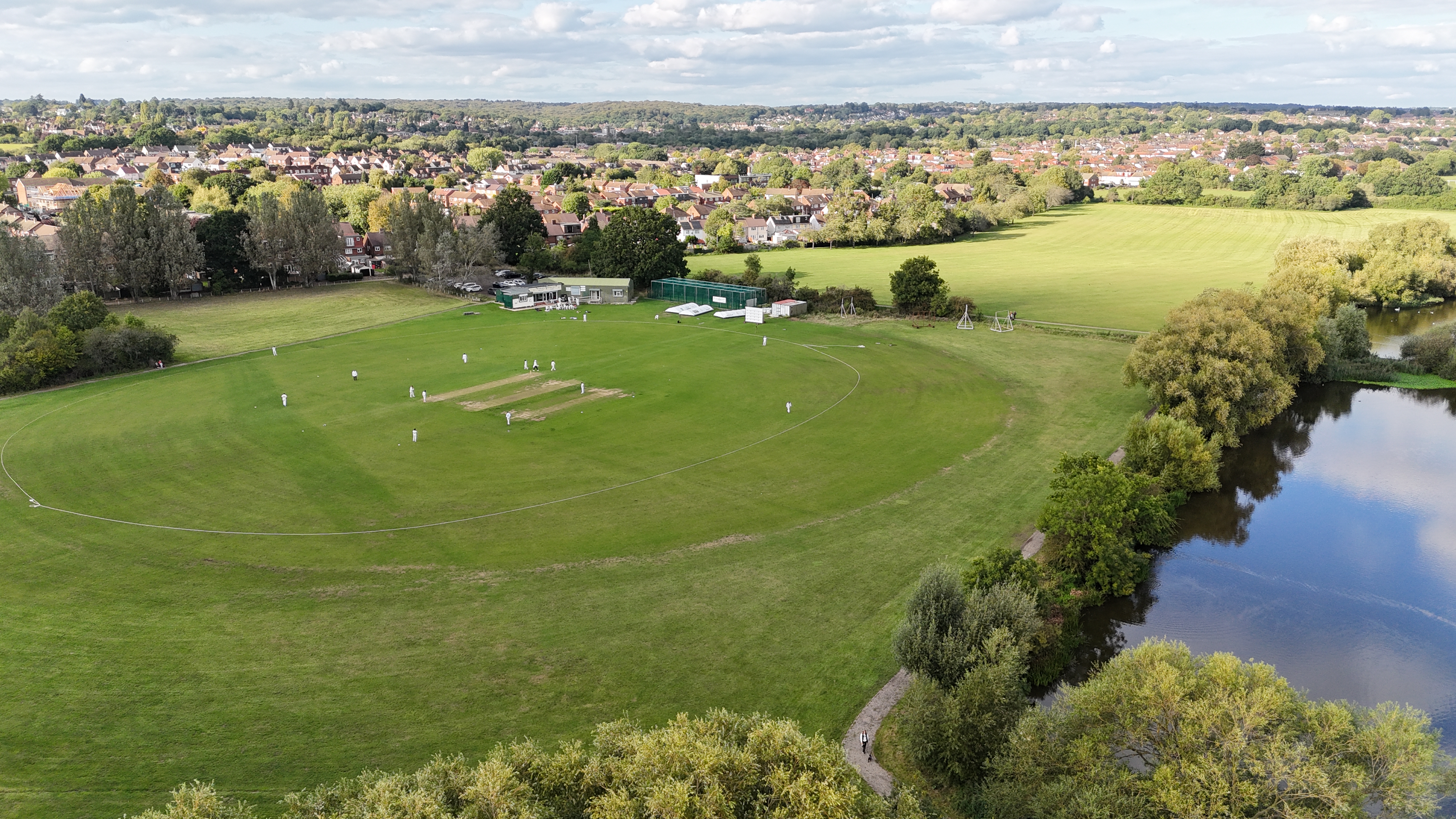


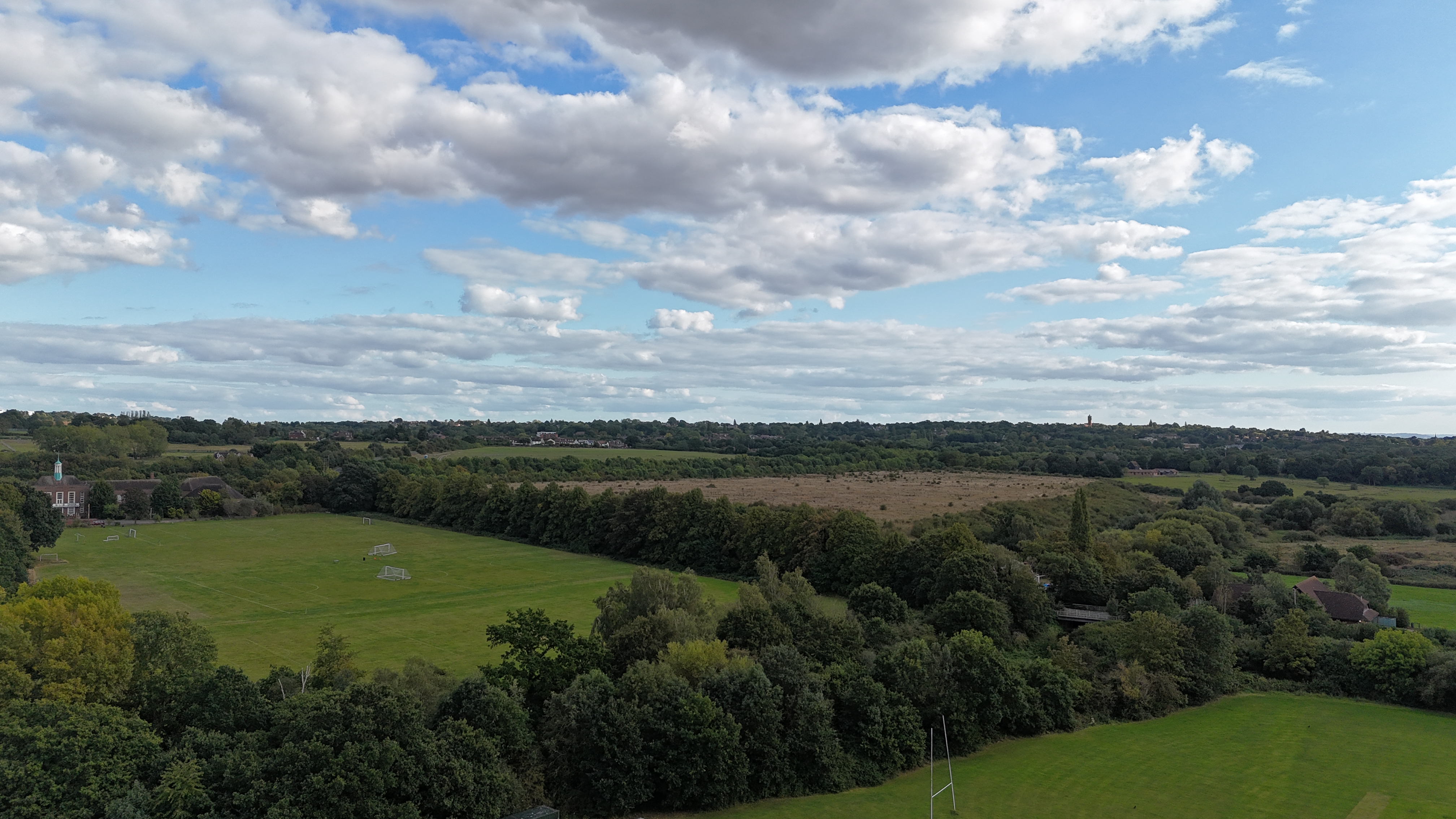
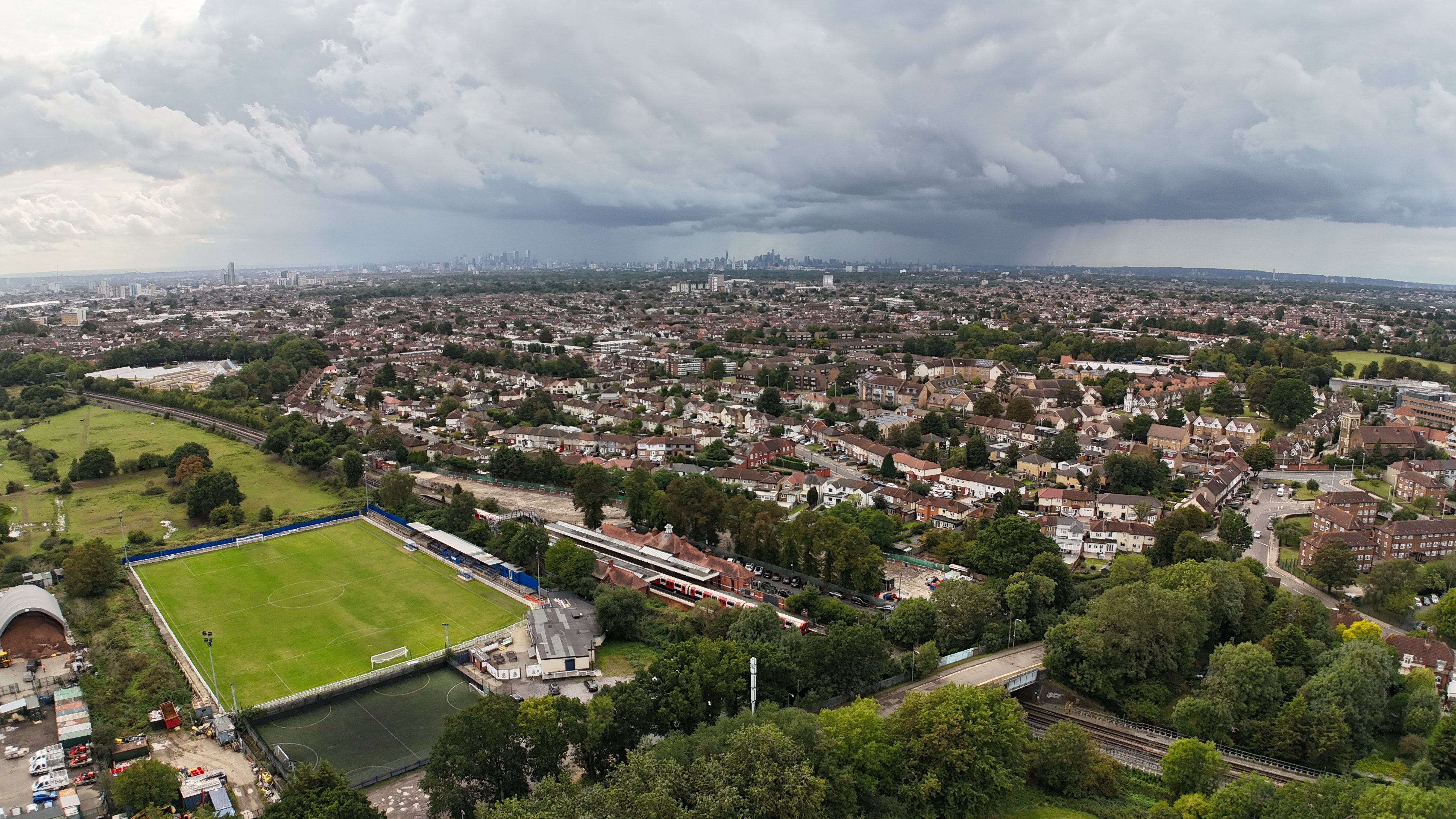
Gallery of images
At the other end of the spectrum, the drone offers a 2x digital zoom which, while not stunning in its quality, will be quite enough for an Instagram post, especially since the camera can be physically rotated so there is no additional cropping. Plus I noticed when shooting in JPEG + RAW that I still got to keep the uncropped version in Raw anyway. Nice one DJI.
I don't know if it's my imagination, but the automated panorama, in which the drone can assemble many shots into a large still image automatically as it flies, feel a little quicker than in the past.
DJI Mini 4 Pro: Drone Performance
The problem an ultralight drone faces will always be how susceptible it is to the wind, but in my flying I found the Mini 4 Pro to be very confidence-inspiring. The motor control systems are clearly quick to respond to inertial changes and I even flew around some tight gaps in a sports field with no problem.
The waypoint system means it is possible to define a flight path (and gimbal angles) even before take off, and the drone will follow that route – the only issue is that it is a little too easy to forget to hit record! This is a fantastic mechanism for repeating routes in different conditions
Usability can be a little fiddly on the small screen of the controller or a phone, but given the number of options, it is difficult to complain about this. Though not new here I love that the collision avoidance can be asked to avoid and keep going rather than just stop and hovering – it just feels so much smarter.
That said, while ActiveTRack subject tracking did seem better, it still lost a couple of subjects – one moving and one static – which I tried it on, so it isn't flawless. Between it and waypoints, however, it is very easy to plan smooth sweeping professional looking shots without having to master fine piloting controls.
DJI Mini 4 Pro: Overall Verdict
The DJI Mini 4 is a near-flawless device surfing the edge of drone tech, and seems incredible given the weight restrictions. It's not cheap, of course, but that makes it so much more flexible for so many creatives looking to add the aerial string to their bow.
Casual users and those starting out don't need to spend so much to get decent video or pictures, the far cheaper DJI Mini 2 SE is still impressive thanks to the drone's gimbal so you can go. That said, of course, if money is no object then the omnidirectional collision detection is an ideal feature for a beginner too, so bear that in mind if you can afford it.
For more serious content creators – especially those put off by the regulations revolving around higher-weight categories – then this is a great choice. In the same way, 4K from a high-end phone is frequently good enough to use professionally, this is true here too – with 10-bit and a high frame rate if needed.
I'd never bet a job on the AI features, but it has to be said they are impressive, and the improvements may be incremental but – together with waypoints – there is a lot here for serious shooters. DJI's long-standing panorama features are still striking.
Personally, I'd buy this as my day-to-day drone for small professional jobs, taking advantage of the portability to get into a variety of locations more easily. As I mentioned, however, I already have the Mini 3 Pro so upgrading won't be a priority; yes, the vision system is better, but I don't operate in the dark a lot and try to avoid obstacles myself so the core improvements aren't essential to me. For some, though, they have the potential to be revolutionary – if you do a lot of indoor shoots the upgrade is probably worth having.

With over 20 years of expertise as a tech journalist, Adam brings a wealth of knowledge across a vast number of product categories, including timelapse cameras, home security cameras, NVR cameras, photography books, webcams, 3D printers and 3D scanners, borescopes, radar detectors… and, above all, drones.
Adam is our resident expert on all aspects of camera drones and drone photography, from buying guides on the best choices for aerial photographers of all ability levels to the latest rules and regulations on piloting drones.
He is the author of a number of books including The Complete Guide to Drones, The Smart Smart Home Handbook, 101 Tips for DSLR Video and The Drone Pilot's Handbook.
